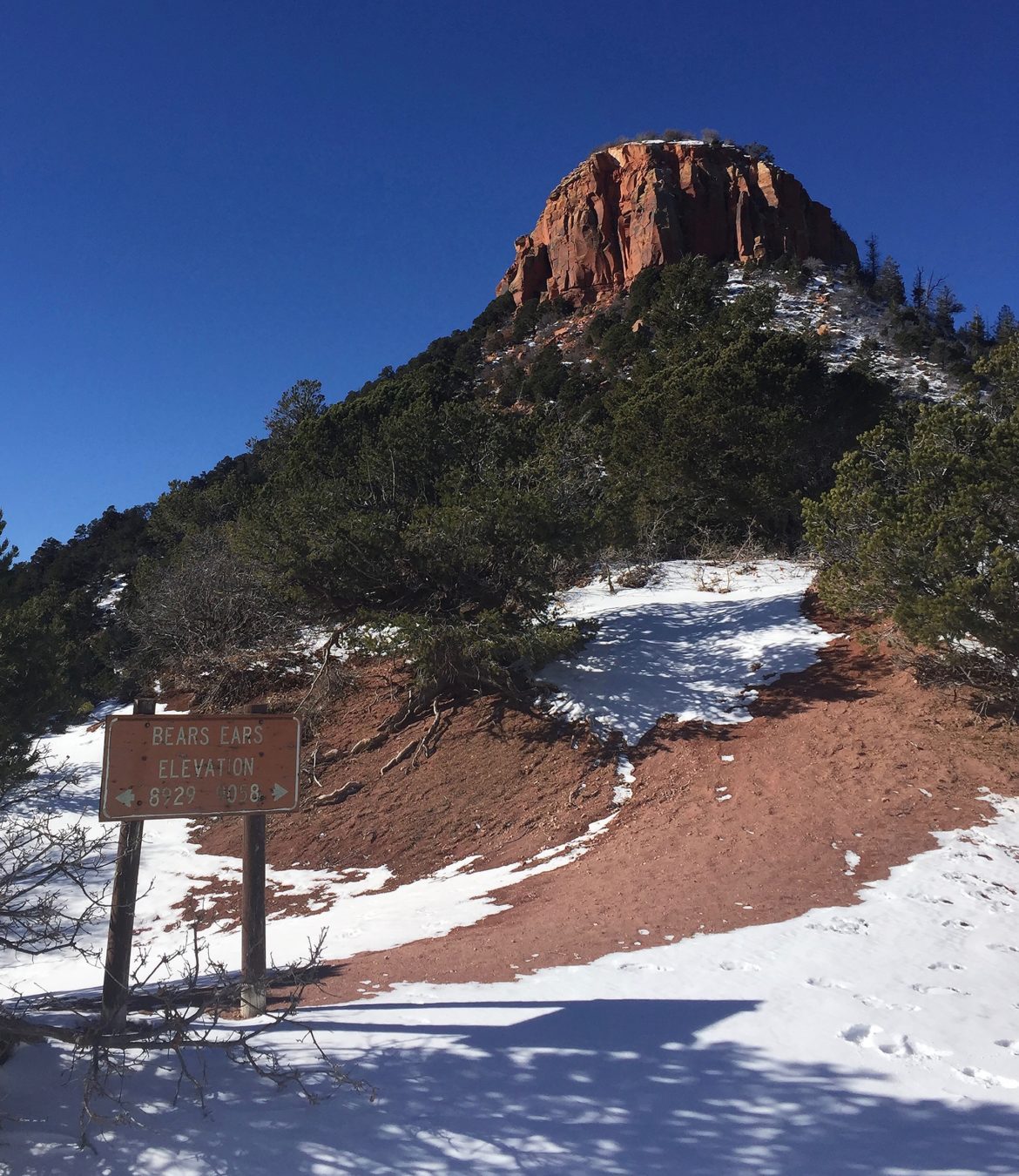The White House has launched a review of two dozen national monuments designated by former Presidents in the last two decades.
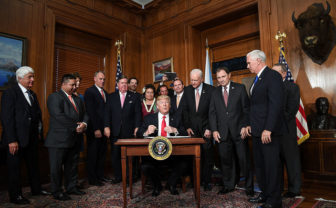
Interior Department
A review of the Antiquities Act is a victory for Utah’s Republican political leaders, who are among the people flanking President Donald Trump as he signed an executive order April 16, 2017.
That review sets the stage for what could be a bitter fight over the federal law that allows presidents to make those designations – the Antiquities Act – and over the future of the newest monument: an expanse of land in southeastern Utah surrounding the twin mesas of Bear’s Ears.
This dispute goes way back. In the summer of 2016, former Interior Secretary Sally Jewell presided over a listening session in the postcard-pretty town of Bluff. Thermometers topped 100 degrees that day in southeastern Utah’s redrock country. Yet, hundreds jammed the tiny Bluff Community Center, and they listened over loudspeakers in the dusty, dirt parking lot, to the debate over the future of nearby land that everyone seems to cherish.
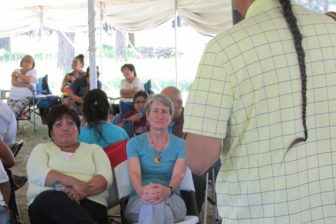
Judy Fahys / KUER
Tribal leaders spent an afternoon with then-Interior Secretary Sally Jewell last summer behind the Bears Ears Buttes. Native Americans who supported the creation of a national monument shared their stories as they tried to convince the Obama administration to protect their sacred traditions and tens of thousands of archaeological sites as a national monument.
“Madam secretary,” one monument opponent said, “can you please answer to us: What gives you the constitutional right to come in here and dictate land here in the state of Utah?”
“Making this designation will take courage,” a young tribal member told Jewell, “and I pray that the president has the courage to make this designation.”
After fielding over three four hours of impassioned comments, Jewell wrapped things up. She said: “I have heard you loud and clear.”
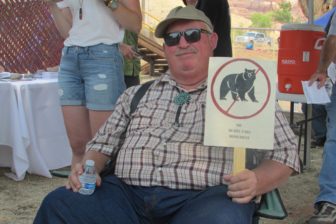
Judy Fahys / KUER
Over 1,000 people attended a listening session held by the former U.S. Interior Secretary, Sally Jewell, last July. Temperatures topped 100 degrees, and the tiny Bluff Community Center building was jammed. But some people stayed through over 4 hours of comments to listen to and take part in the discussion.
And a few months later Obama created the 1.3 million acre Bears Ears National Monument as one of his last official acts as president.
This week, the White House tasked Ryan Zinke, the new Interior Secretary, has been tasked by President Trump with reassessing two dozen national monuments, beginning with Bears Ears.
“Mr. President,” Zinke said at an official signing ceremony in President Trump’s office on April 26, “thank you once again for fulfilling your campaign promise to give a voice to our local communities and states.”
Trump’s executive order gives Zinke the summer to suggest changes to the 24 monuments and possibly the century-old Antiquities Act. Utah Republicans and the Trump administration say reform is long overdue. They contend the Antiquities Act is being abused and harming rural Americans.
“The Trump administration is doing what should have been done in the first place,” says U.S. Rep. Rob Bishop, R-Utah, “by not only talking to people who live on the ground but actually listening to them.”
As chairman of the House Resources Committee, Bishop is eager to help the administration with the overhaul. He represents the concerns of many Utah locals who have traditionally mined and ranched federal public lands. “Ultimately,” he adds, “there has to be some legislative changes that are made.”
A president has never rescinded another president’s monument, and attorney John Leshy says that’s just one sign of how well the Antiquities Act has held up since 1906. But the Trump administration has been so unconventional it is hard to predict any threats Zinke’s review might pose to the law and its principles, Leshy continues.
“Recommendations could include going to Congress, trying to take action on his own or doing nothing,” says Leshy. “At this point, he leaves all options open.”
Leshy was the Interior Department’s top lawyer two decades ago when President Bill Clinton created another controversial Utah monument, the Grand Staircase Escalante. That monument is also part of the Zinke review.
But Leshy says past court challenges and political efforts against the Grand Staircase failed. And now he wonders whether how much the Trump administration will be swayed by the love Americans feel for federal public lands.
Monument “defenders will hopefully make themselves heard loud and clear in this process,” he says, “and say, ‘We’re fine and happy with these things and don’t tinker with them’.”
Shaun Chapoose, chairman of the Ute tribe, is a big supporter. His tribe was part of the Bears Ears Intertribal Coalition, which urged Obama to create the Bear’s Ears monument,to allow tribes to continue traditions like herb-gathering, to protect cultural resources like the hundreds of thousands of archaeological sites and for grazing and other popular activities enjoyed by locals who’ve settled the area.
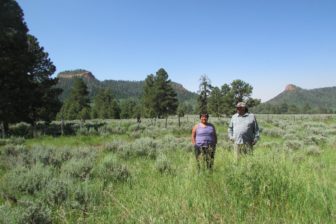
Judy Fahys / KUER
Regina Lopez Whiteskink, a Ute, and Jonah Yellowman, a Navajo, were part of the coalition that gave up on a legislative solution for protections at Bears Ears and urged the-President Barack Obama to create the Bears Ears National Monument on Dec. 28. The two are shown last summer in an herb-gathering area behind the iconic buttes.
“And what’s crazy is antiquities, right — who’s more antique than Native American tribes?” he asks. “Really, what we’re trying to protect by designating the area is exactly the history of the first peoples here in North America.”
Chapoose wonders if discrimination is to blame for the Trump administration’s attack on Bears Ears. He points out it is the only national monument of 150 championed by Native Americans and designed with a co-management role for tribes.
Others are also hoping the monument designations stick, especially at Bears Ears. They include rock climbers, archaeologists, conservationists and even local entrepreneurs, like Ashley Korenblat.
She runs a cycling guide service in Moab, a tourist town that used to be a mining hub just north of the monument area.
“The Antiquities Act is bringing economic development to places where resource extraction hasn’t been providing,” says Korenblat, who also runs a nonprofit called Public Lands Solutions.
The outdoor recreation industry, she points out, reports $887 billion dollars in annual consumer spending.
“The folks that are asking for this [national monument] review hope to prove that we’re hurting the economy of these communities,” she says. “But the reality is, we are promoting those economies because, in the 21st century, people want to visit historic and natural places, which is what the Antiquities Act provides.”
The Trump administration’s April 26 directive does not require Zinke to get broad public input or public hearings for his review. But the Interior Secretary is promising to visit southeastern Utah, just like his predecessor did last summer.
What’s Next:
- Check out other stories on Bear’s Ears by Judy Fahys at KUER.org
- Find out when Inside Energy’s documentary about the Dakota Access Pipeline and Bear’s Ears is airing on your local PBS station by going to our Beyond Standing Rock website.
- Interior Secretary Ryan Zinke is supposed to deliver a preliminary report to President Trump in 45 days. Stay tuned for a June 10th report.
